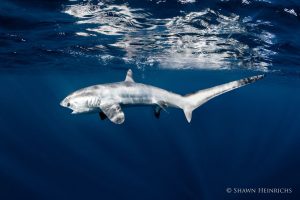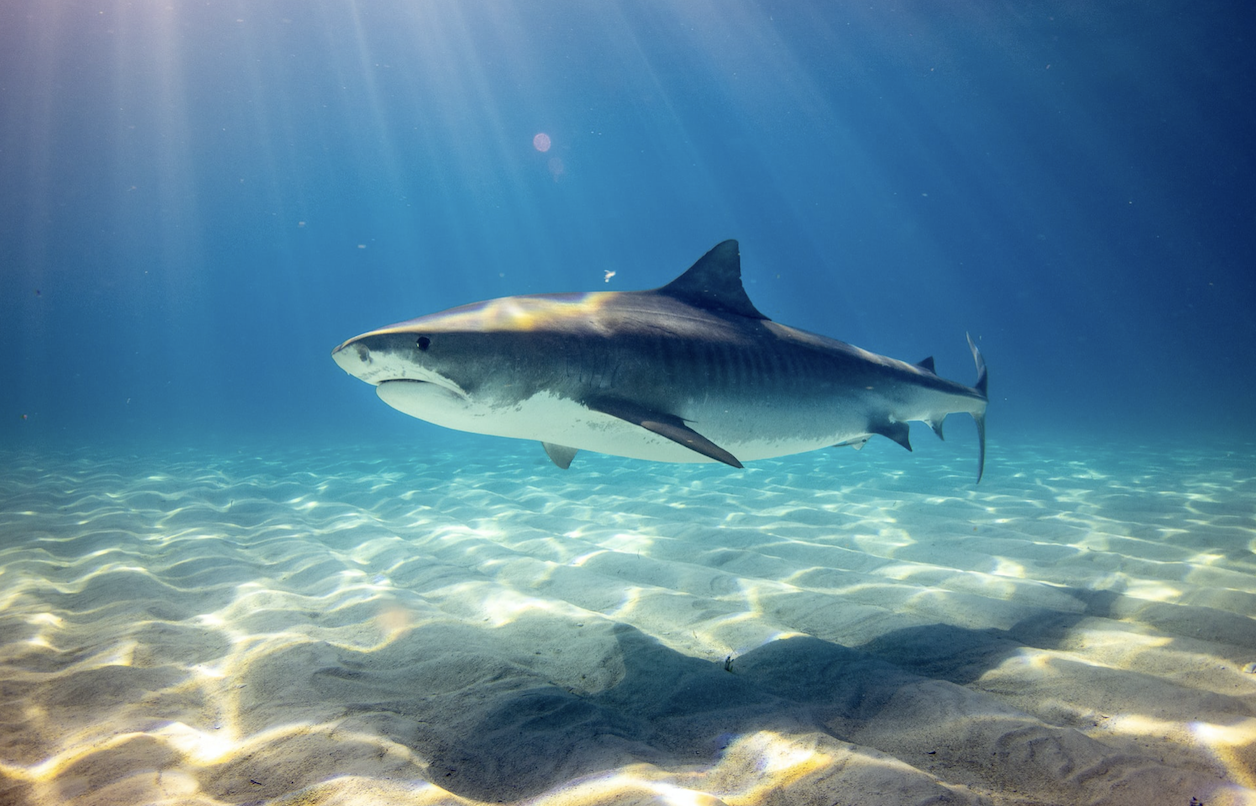
Here at Thresher Shark Indonesia , our work focuses on the conservation of sharks. For those of you who are interested, we’d like to take this opportunity to share a little bit more information about the history and characteristics of sharks in general.
Sharks have been around for over 450 million years and are one of the most important creatures in our oceans. They are the living fossils, ruling our seas even before dinosaurs ruled the lands. As apex predators, sharks play a significant role in the ecosystem by controlling and maintaining species lower in the food chain. By removing the sick and weak, they keep the balance between other marine competitors and help maintain species diversity within our oceans. Their existence is crucial to the health of our seas.
 Tiger Shark ( Galeocerdo cuvier )
Tiger Shark ( Galeocerdo cuvier )
Sharks are categorized as ‘cartilaginous fish’ because their skeleton is made from cartilage instead of bone. This group of ‘cartilaginous fish’ is extremely diverse, containing large species such as whale sharks and great white sharks, but also all skates and rays. No matter the size of shark species, all sharks have similar anatomy. The only skeletal part of a shark that is not made out of cartilage in their teeth. This is why it is not uncommon to find fossilized shark teeth around the world. Unlike most normal ‘fish’ – sharks differ as they do not have a swim bladder or any hard bones. Cartilage is much lighter than bone, which allows sharks to stay and swim long distances whilst conserving more energy.
Sharks are an incredibly diverse group of species and each species is extremely well adapted to its specific environment . They can be found inhabiting every part of our ocean, from the deep seas, coral reefs, pelagic zone, to our arctic seas. Currently, there are around 500 species of sharks . The largest types of sharks, the whale shark, can grow to sizes over 18 meters long, whilst the smallest species of shark can fit in the palm of your hand.
Some species of shark, such as the Great White Shark, migrate vast distances across oceans to breed and feed, whilst other species are more stationary, such as the infamous walking sharks of Indonesia. Some shark species are known to partake in vertical migration, meaning they move from the depths to the ocean surfaces to breed / and or feed.
The diversity amongst this class of animals is truly astonishing. Apart from being such strong predators, their diversity has played an important role in their success in dominating our oceans for millions of years – even surviving 5 mass extinctions.
Sharks mature slowly and typically have a small reproduction rate. Unlike other bony fish, sharks focus a lot of energy into producing a small number of highly developed young ( compared to releasing a large number of eggs ). This aspect of their lifecycle makes them particularly vulnerable to threats such as overfishing.
Worldwide, shark populations have shrunk drastically due to overfishing. It is estimated that over 100million sharks are killed each year. Despite having a rapidly declining population throughout the world, there is still minimal work being done to try and bring their population numbers back up. Conservation efforts are extremely necessary if we want to ensure a future for this species in our oceans.
In our upcoming blog posts – we will discuss more in detail the threats sharks are currently facing and the work we are doing in Indonesia to better their conservation.